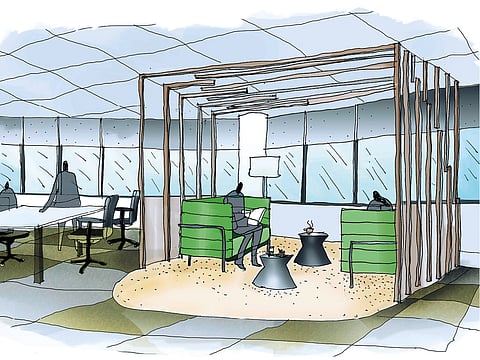Making wellness work in the office
Jayne Higgins and Shauna Mangan discuss the outcome of a wellness experiment in their workplace

There is no consensus around a single definition of wellbeing, but there is general agreement that at minimum, wellbeing includes the presence of positive emotions and moods (e.g. contentment and happiness), the absence of negative emotions (e.g. depression and anxiety), satisfaction with life, fulfilment and positive functioning. In simple terms, wellbeing can be described as judging life positively and feeling good. Happiness can come and go in a moment, whereas wellbeing is a more stable state of being well and feeling satisfied and content.
A company’s success depends on its people. Companies need to ensure their people are operating at their optimum and are in the best of their health, both physical and mental. It is therefore vital that companies provide the right frameworks and policies to support their employees.
Technology is acting as an enabler to a healthy lifestyle
Last year CBRE explored the options that could be introduced to the office to improve the overall health and wellness of the staff through its “Global Workplace Innovation”. The project identified five trends fuelling the demand for wellness programmes now (see box below).
Implementing wellness in the office
Based on these findings, CBRE introduced upgrades and wellness in its new Dubai office through a green fit-out approach and monthly wellness initiatives. One of the key changes introducing was the use of sit-stand desks. Studies have connected being sedentary for prolonged periods of time with everything from increased risk of breast and colon cancer, heart disease, stroke, diabetes and neck pain. Standing desks allow you to burn slightly more calories than you would sitting while you work, and they can also reduce the risk of shoulder and back pain.
Other key initiatives included improving the lighting. Poor lighting directly affects work performance as it puts strain in the eyes. This can also lead to further problems like headaches and eye illnesses. CBRE also has a number of breakout rooms. It’s become increasingly commonplace for majority of organisations to have a breakout area included in the office.
Past studies have shown that having an area in the workplace of this type, surrounded with comfortable breakout furniture, is supposed to greatly help with improving employee wellness. Due to the nature of thousands of peoples’ jobs in the corporate world, it’s often likely for staff members to develop unpleasant eye strain and back pains. This makes it paramount for employees to have a place where they can just relax and unwind for a while away from their daily tasks.
Having that option to disconnect from work for a few moments has proved to not only help reduce stress, but it’s also found to increase productivity levels too. This is because you return to your work with a fresh mind and greater willingness to complete your work, rather than having to continually work at your desk with no break.
Wellness champion
From January, a wellness committee was formed, which has mapped out an array of wellness workshops and initiatives to begin the process of improving the employees’ health and knowledge on the importance of wellness in everyday life. Some of the initiatives involved a chef coming into the office and showing the employees how easy it is to make a healthy lunch at work and other methods of improving your eating habits in the workplace. Our insurer held a wellness day in the office, which involved employees having a free health check, covering BMI, glucose levels and blood pressure followed by a healthy lunch.
The company also has a number of “wellbeing champions” who are a diverse group of people from different parts of the business. Their purpose is to promote and help to raise awareness of one’s wellbeing; and they are trained to support individuals if they are experiencing any personal difficulties. While the wellbeing champions are not trained counsellors, they are there to listen and to guide employees to specialist advisors or to support groups, should that be necessary.
Source: CBRE Global Workplace Innovation
Sign up for the Daily Briefing
Get the latest news and updates straight to your inbox

